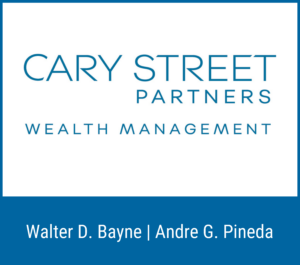By Chris Muldrow
Trip report part one: C&O Canal
Who knew there were so many different kinds of mud?
Sandy mud left by a flooding Potomac that’s slick like glass; wet thin mud that sluices up your leg and dries to a flaky crust; dark alkaline mud that raises rust on your bike’s chain and leaves your hands an unwashable grey; thick gumbo mud that cakes itself on your fenders and brakes and has to be cleared away or it will grind your ride to a halt.
I spent three days cycling the C&O Canal Towpath with my brother, Tripp, and my good friend Nick, and we rode through (and frequently wore) all of the kinds of mud.
The towpath runs for 184.5 miles along the Chesapeake and Ohio Canal. Mules walked the path, towing boats full of coal and other cargo. The mules are gone now, but the system of locks, aqueducts, bridges and dams is preserved as the Chesapeake and Ohio National Historic Park.
I also managed to convince Nick to join us. His 65th birthday was approaching, and what better way to celebrate that than to grind out 60 miles or more a day on an often unforgiving trail?
We hauled our bikes to Union Station in Washington in the back of my truck, then rolled them onto the Amtrak Capital Express. For a small fee, you can roll your bike into a special baggage space on the train—you can then roll off anywhere on the route from DC to Chicago. For the C&O, your destination is Cumberland, Md.
As we rolled along on the train, we got our first look from the observation lounge at a very angry Potomac river, which was up over its banks up past its tidal section. That river’s water would be the source of quite a bit of angst over the next three days.
We arrived in Cumberland past 7, and we turned on our bike lights to make the mile ride to the Hampton Inn. That meant our first mile on the bikes was a sharp climb through the city and up to the parking lot of the hotel. That would be the steepest climb we’d have through the entire trip.
The staff at the Hampton Inn was great, letting us store our bikes in a secure room and making sure we had ice-filled water bottles when we departed early the next morning. That hospitality was repeated the entire trip down the trail by most of the people we ran into.
After leaving through an arch in downtown Cumberland, we started out and tried to figure out what kind of pace we were going to hold. The mist hung on the air as we started to put on some miles, and then we got into our first section of mud. Tripp hit a patch a little sideways and went down—it was the only wreck we’d have the whole trip, though there were several near-falls as we learned to navigate the slick surface.
Most of the path has a mix of crushed rock and dirt. The huge amount of rain that has fallen all summer fought the harder surfaces, though, and created stretches of muck interspersed with solid ground. We quickly learned to keep up our speed, keep the weight on the back of our bikes and power through—by the end of the trip, we had also learned that sometimes the most solid path was through the deepest-looking puddles.
About 20 miles into the journey, Tripp’s bike started making noises. He thought it was just mud on the mechanism, but when we stopped we saw his brake had come loose. I set it right and he started back, but as I rode behind him, I realized his wheel was wobbling all over the place and rubbing against his bike frame.
We stopped again, and I ended up having to pull the tube and tire off his back wheel—he had broken three spokes on one side of the wheel. We were there for an hour or more while I trued his wheel enough to keep it from rubbing, and we disconnected his back brake for good. It still wobbled like a clown car’s wheel, but it wasn’t creating friction. The first day’s ride is nearly barren of places to stop, and certainly is bereft of bike shops. We decided to try to make it to our first stop in Hancock.
Our trip took up through the Paw Paw Tunnel, a dark cut through the mountain where the mules would pull boats. Tripp rode through with his light on, but Nick and I opted to walk most of the way on the slick surface inside. I didn’t have any interest in a swim in the dark.
Once we got out of the Paw Paw, we actually started smelling the namesake fruit in the woods around us. Paw paw trees grow in abundance along the bottomlands of the Potomac, and we saw their fruit and lots of walnuts fallen on the trail. Nick also pointed out osage oranges scattered about.
We lost a bit of time with Tripp’s mechanical issue, but we still stopped for a late lunch at Bill’s Place, a biker bar (the kind of bikes with loud pipes) and restaurant at Little Orleans. I’m not sure if the burger was a good one or not in the grand scheme of things, but it was just right after several hours on the trail.
I rolled out of Bill’s before the other guys to try to catch the bike shop in Hancock before they closed. About 10 miles from Hancock, I switched from the C&O over to the Western Maryland Railroad Trail, a paved rail trail that parallels the towpath. C&O Bicycle in Hancock had one wheel left that would fit Tripp’s bike, and Tripp and Nick appeared with more than enough time for the mechanic to swap Tripp’s cassette over to the new wheel and mount it.
We stayed at River Run Bed and Breakfast, which advertises itself as bike-friendly with “no doilies,” which suited our sensibilities. Sure enough, the innkeeper showed us where we could hose off our bikes, how to store them securely and where the floor pump was to fill the tires. He also pointed us to a restaurant called Buddy Lou’s, where the guys got spaetzel and I had some salmon and we all tried a bottle of their locally sourced and bottled sodas. Then we slept like the dead.






























